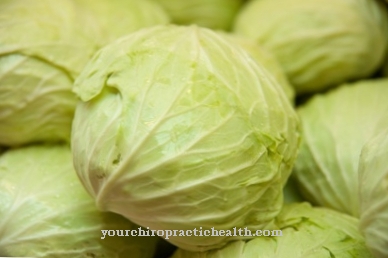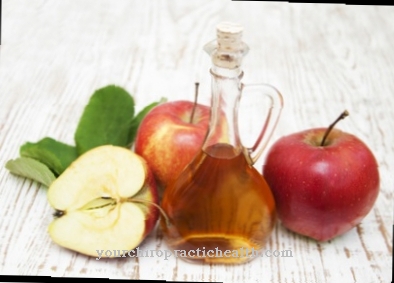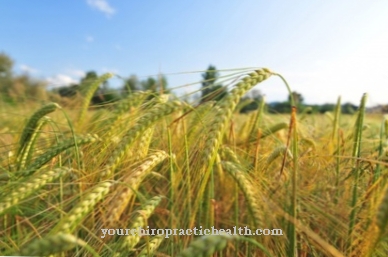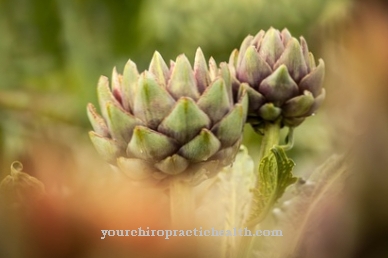butter has been made from milk for human consumption for many millennia. The most common is butter made from cow's milk. However, the edible fat can also be obtained from the milk of other animals such as sheep or goats. The following information mainly relates to butter made from cow's milk.
What you should know about butter

In its unprocessed state, milk has a high percentage of fat. The milk of dams has its original meaning as a food source for the young animals. Humans raise animal breeds such as cattle, sheep and goats not only for meat.
Milk and the products made from it also play an important role in human nutrition. To make butter, the cream is first separated from the milk. The cream is then whipped until the fat separates from the liquid in a granular form. The liquid is known as buttermilk. The butterfat still contains up to a third of the water at this point. By kneading, the water content is pressed out further and thus reduced.In Germany, butter comes on the market with a pure fat content of at least 82 percent.
Pasteurized milk, i.e. milk heated to at least 72 degrees Celsius for a few seconds, is used for the mass production of butter. Customers can find different types of butter on the refrigerated shelves of supermarkets. Real sour cream butter is one of the seldom offered products. The cream is vaccinated with lactic acid bacteria before processing. After a while, sour cream is produced, which is then used to make butter. The soured cream produces butter with a slightly sour taste and particularly easy to spread. There is a mildly acidified butter if the granular butterfat is mixed with lactic acid bacteria after whipping. The advantage of this process is that the separated buttermilk does not undergo lactic acid fermentation.
Like the mildly acidified butter, it corresponds better to the common taste of consumers. Sweet cream butter is created when the acidification process is completely dispensed with before processing. The sweet cream butter has a particularly creamy taste. So-called land butter is also made from unleavened cream. The specialty of the land butter is that the cream is not pasteurized before processing. Milk-producing companies sometimes produce land butter for direct marketing. In addition to the types mentioned, butter preparations can also be found on the refrigerated shelves. Herbal butter is created by adding herbs and spices. Sweet cream butter, which is mixed with salt and offered as "salted butter", offers a special flavor variant.
Another product made from butter is clarified butter. This is pure butter fat from which the protein and water components still present in the butter have been removed. The appearance and taste of butter depend not only on the type of milk and how it is made. Feeding the animals also plays an important role. In order to offer the consumer a uniform product in the mass production of butter, the butter is often colored with β-carotene.
Importance to health
Fats are an essential part of a balanced healthy diet. However, fats like butter have a high energy potential. A high consumption promotes the development of obesity and thus means a health risk.
Therefore, according to the recommendation of the German Nutrition Society, an adult should not consume more than a total of 60 - 80 grams of fat per day. Fats are found in vegetable oils, cheese, sausage and meat. Fat is important for the taste of food. So does the butter. However, fats of animal origin mainly contain saturated fatty acids. These are suspected of having very negative effects on our health. Saturated fatty acids promote the process of arteriosclerosis, the calcification of our arteries.
Atherosclerosis as a disease of our blood vessel system is the basis for numerous, often life-threatening diseases of the heart. Therefore, fats such as those in sea fish and vegetable oils that contain health-promoting polyunsaturated fatty acids should be preferred in our diet. Butter only contains about four percent polyunsaturated fatty acids. Because of its high energy density and the high proportion of saturated fatty acids, butter should only be consumed in moderation.
Ingredients & nutritional values
| Nutritional information | Amount per 100 gram |
| Calories 717 | Fat content 81 g |
| cholesterol 215 mg | sodium 11 mg |
| potassium 24 mg | carbohydrates 0.1 g |
| protein 0.9 g | Fiber 0 g |
The commercially available butters contain 82 grams of fat per 100 grams. There are also small amounts of protein (0.6 grams) and carbohydrates (0.5 grams). 100 grams of butter provide 741 kcal, which corresponds to about 37 percent with a daily requirement of 2,000 kcal.
Butter contains various vitamins. The main parts of it are vitamins A, E and beta-carotene. The main minerals and trace elements found in butter are calcium, potassium, manganese, copper and fluorine.
Intolerances & allergies
Many people today suffer from food intolerance. Food intolerance can trigger digestive problems due to milk protein and lactose. Histamine intolerance can also occur when consuming milk and dairy products. Since the proportion of histamine and protein in cream and butter is low, many patients who otherwise have an allergic reaction to dairy products can tolerate these high-fat foods. Nevertheless, in rare and extreme cases, intolerance can occur even when consuming butter.
Shopping and kitchen tips
Every consumer should make the purchase of the type of butter as a spread dependent on his personal taste. Experienced housewives recommend using sweet cream butter for making pies and cakes.
When buying butter, the best-before date must always be observed. The best place to store the butter is in the specially designed butter compartment in the refrigerator. Butter can also be frozen well and stored for about half a year. You can recognize older butter by the fact that it is yellower on the outside than on the inside of the butter piece. However, this effect is counteracted more and more frequently in industrially produced butter by coloring the butter with β-carotene. This vitamin A precursor is either added to the cream before buttering or already mixed into the cows' feed.
Preparation tips
Butter must never be heated too much, as the protein components quickly darken and burn. The clarified butter, the clarified butter, is better for frying. Butter is very popular in hot and cold dishes.
As an alternative to the already seasoned herb butter from the supermarket, it can also be prepared at home with fresh herbs, salt, pepper and a splash of lemon juice. Butter is versatile. As a spread on bread, it is always a tasty and tangy pleasure thanks to the addition of mustard, tomato paste, paprika, anchovies and many other ingredients. Adding a little butter to cooked vegetables increases the flavor. Since our organism needs fat to break down vitamin A, it is tradition to refine carrot vegetables, which are rich in vitamin A, with a touch of butter.

























.jpg)


